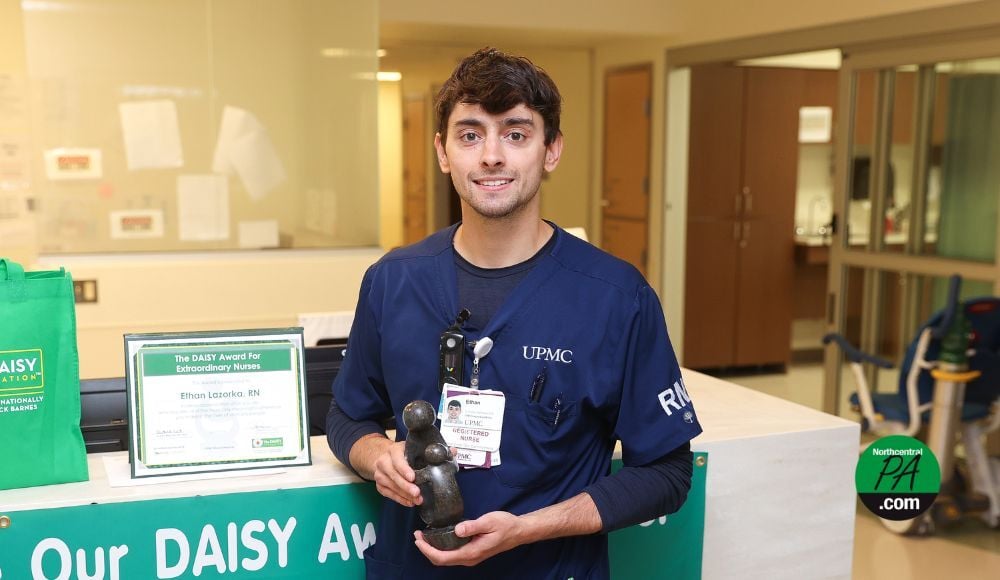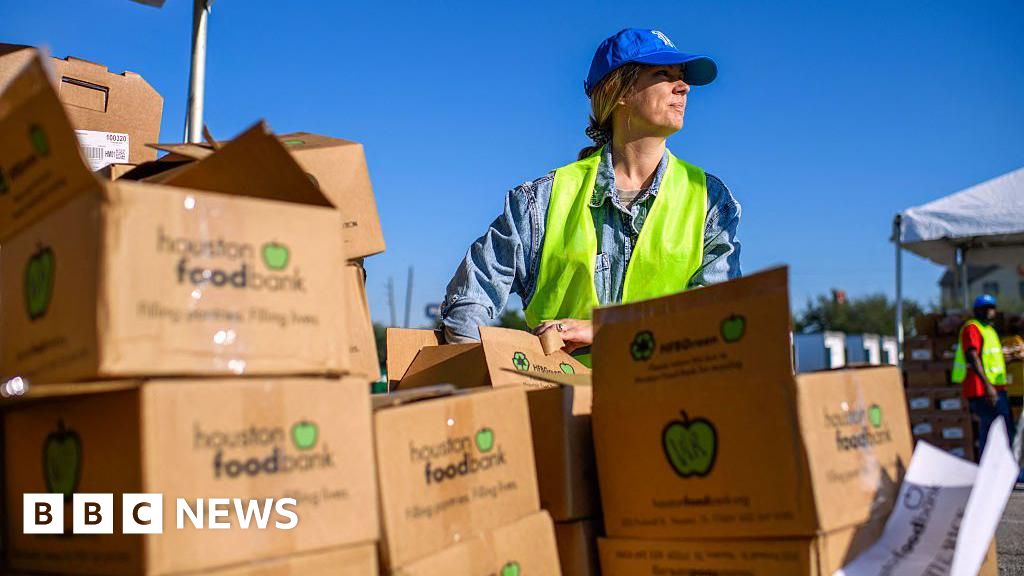UPMC family medicine residency helps grow food security in Lycoming County – NorthcentralPA.com

Report on Community Health and Food Security Initiatives in Lycoming County
This report details a multi-faceted initiative led by the UPMC Williamsport Family Medicine Residency team to enhance food security and community health in Lycoming County, Pennsylvania. The project’s components directly align with and support several United Nations Sustainable Development Goals (SDGs), particularly those concerning hunger, health, water management, and sustainable communities.
Project Initiatives and SDG Alignment
The program, spearheaded by Dr. Taylor Rider through a grant from the Pennsylvania Academy of Family Physicians (PAFP), consists of two primary components designed to create a sustainable impact on local food systems and public health.
- Installation of a Drip Irrigation System
- Launch of “Vital Roots” Community Teaching Kitchens
1. Drip Irrigation System for Sustainable Agriculture
A significant infrastructure upgrade was completed at the Salvation Army Community Garden with the installation of a new drip irrigation system. This effort was a collaboration between UPMC medical personnel, UPMC facilities staff, and Salvation Army representatives, demonstrating a commitment to SDG 17: Partnerships for the Goals.
- Contribution to SDG 2 (Zero Hunger): The system is projected to increase the yield of fresh, local produce, directly combating food insecurity, which affects one in ten people in the region. This enhances access to nutritious food for vulnerable populations, including children and seniors.
- Contribution to SDG 6 (Clean Water and Sanitation): Drip irrigation promotes efficient water use by delivering water directly to plant roots, minimizing waste and supporting sustainable water management practices in agriculture.
2. “Vital Roots” for Health and Well-being
The “Vital Roots” initiative is a series of community teaching kitchens that educate residents on preparing whole food, plant-based meals using produce from the community garden and local food banks. This program directly addresses the link between nutrition and health.
- Contribution to SDG 3 (Good Health and Well-being): By empowering participants with culinary skills and nutritional knowledge, the program provides practical tools to prevent chronic diseases associated with food insecurity. As stated by Dr. Elizabeth Anderson, “Food insecurity is more than just a lack of food — it’s a root cause of chronic disease.”
- Contribution to SDG 4 (Quality Education): The kitchens serve as an educational platform, providing lifelong learning opportunities for residents regarding health, nutrition, and sustainable living.
- Contribution to SDG 11 (Sustainable Cities and Communities): The initiative fosters social connection and community resilience by bringing residents together to learn and share meals, strengthening the local community fabric.
Program Structure and Educational Framework
The teaching kitchens are an extension of the UPMC residency’s Lifestyle Medicine Residency Curriculum (LMRC), which is founded on six pillars of health:
- Whole-food, plant-based eating
- Physical activity
- Sleep
- Stress management
- Substance use avoidance
- Social connection
This comprehensive approach to wellness underscores the program’s deep integration with the principles of SDG 3: Good Health and Well-being.
Community Participation
The Vital Roots teaching kitchens will be hosted in partnership with Family Promise of Lycoming County. Sessions are open to all county residents, with registration required.
- Location: 635 Hepburn St., Williamsport
- Time: 6:00 p.m. to 8:00 p.m.
- Dates:
- August 7
- August 28
- September 25
- October 9
- October 30
Analysis of Sustainable Development Goals in the Article
1. Which SDGs are addressed or connected to the issues highlighted in the article?
-
SDG 2: Zero Hunger
- The article directly addresses food security in Lycoming County, citing that “one in 10 people in this region experience food insecurity.” The core initiatives, such as the Salvation Army Community Garden and the Vital Roots teaching kitchens, are designed to “strengthen food security” and provide “fresh, local produce for individuals and families in need.”
-
SDG 3: Good Health and Well-being
- The initiative explicitly links nutrition to health, stating, “Food insecurity is more than just a lack of food — it’s a root cause of chronic disease.” The project aims to “improve food access and community health” through education on “whole-food, plant-based eating” and the Lifestyle Medicine Residency Curriculum (LMRC), which focuses on preventing chronic illness.
-
SDG 6: Clean Water and Sanitation
- The installation of a “drip irrigation system” is a key component of the project. This technology is known for its water efficiency, which aligns with the goal of sustainable water management. The article notes it will “reduce maintenance,” implying a more efficient use of resources, including water.
-
SDG 17: Partnerships for the Goals
- The project is a “multi-faceted initiative” built on a “collaborative effort.” The article highlights partnerships between UPMC Williamsport Family Medicine Residency, the Salvation Army, Family Promise of Lycoming County, and funding from the Pennsylvania Academy of Family Physicians (PAFP). This demonstrates a multi-stakeholder approach to addressing a community issue.
2. What specific targets under those SDGs can be identified based on the article’s content?
-
Target 2.1: End hunger and ensure access to safe, nutritious and sufficient food
- The project aims to provide “healthy produce through local food programs” to address the fact that “one in 10 people in this region experience food insecurity.” The Vital Roots teaching kitchens further this by teaching residents how to use “fresh produce from the garden and items from local food banks to create whole food, plant-based meals,” ensuring access to nutritious food.
-
Target 2.4: Ensure sustainable food production systems and implement resilient agricultural practices
- The installation of a “drip irrigation system” is a resilient agricultural practice that increases the garden’s sustainability. The article states this new infrastructure is “expected to increase yields” and “reduce maintenance,” contributing to a more productive and sustainable local food production system.
-
Target 3.4: Reduce by one third premature mortality from non-communicable diseases through prevention and treatment and promote mental health and well-being
- The article identifies food insecurity as a “root cause of chronic disease.” The Vital Roots teaching kitchens and the Lifestyle Medicine Residency Curriculum (LMRC) are preventative measures designed to “educate and empower participants with practical tools for better health,” directly addressing the prevention of non-communicable diseases through lifestyle changes like “whole-food, plant-based eating.”
-
Target 6.4: Substantially increase water-use efficiency across all sectors
- The implementation of a “drip irrigation system” is a direct action to increase water-use efficiency in the community garden’s agricultural activities, ensuring that food is produced with more sustainable use of water resources.
-
Target 17.17: Encourage and promote effective public, public-private and civil society partnerships
- The entire initiative is an example of this target in action. It is a “collaborative effort involving” UPMC (a healthcare provider), the Salvation Army (a civil society organization), and Family Promise (a community partner), funded by a grant from the PAFP. This partnership leverages different strengths to achieve a common goal.
3. Are there any indicators mentioned or implied in the article that can be used to measure progress towards the identified targets?
-
Indicator for Target 2.1: Prevalence of food insecurity.
- The article provides a baseline indicator by stating, “one in 10 people in this region experience food insecurity, an issue that disproportionately affects children and seniors.” Progress could be measured by tracking a reduction in this prevalence over time within the community served.
-
Indicator for Target 2.4: Increase in agricultural productivity and yield.
- The article implies this indicator by stating the new infrastructure is “expected to increase yields.” Progress can be measured by quantifying the volume of fresh produce harvested from the garden before and after the installation of the irrigation system.
-
Indicator for Target 3.4: Knowledge of healthy lifestyles and prevention of chronic disease.
- The Vital Roots teaching kitchens are designed to “educate and empower participants.” An implied indicator is the number of community members attending the classes. Progress could also be measured through pre- and post-session surveys assessing participants’ knowledge of healthy eating and their confidence in preparing nutritious meals.
-
Indicator for Target 6.4: Change in water-use efficiency.
- While not explicitly stated, the installation of the “drip irrigation system” implies a goal of reducing water consumption. Progress could be measured by tracking the amount of water used by the garden, demonstrating a more efficient use of water compared to previous irrigation methods.
-
Indicator for Target 17.17: Number and quality of partnerships.
- The article explicitly names the partners involved: UPMC, the Salvation Army, Family Promise of Lycoming County, and the PAFP. The indicator is the successful formation and operation of this multi-stakeholder partnership to implement the project. The securing of the grant is also an indicator of a successful resourcing strategy.
4. Table of SDGs, Targets, and Indicators
| SDGs | Targets | Indicators |
|---|---|---|
| SDG 2: Zero Hunger |
2.1: End hunger and ensure access by all people to safe, nutritious and sufficient food all year round.
2.4: Ensure sustainable food production systems and implement resilient agricultural practices that increase productivity and production. |
Prevalence of food insecurity in the region (baseline: 1 in 10 people).
Increase in garden yields/volume of produce harvested. |
| SDG 3: Good Health and Well-being | 3.4: Reduce by one third premature mortality from non-communicable diseases through prevention and treatment and promote mental health and well-being. | Number of participants in “Vital Roots” teaching kitchens; increased community knowledge of healthy diets and chronic disease prevention. |
| SDG 6: Clean Water and Sanitation | 6.4: By 2030, substantially increase water-use efficiency across all sectors. | Change in water use/efficiency in the community garden due to the new drip irrigation system. |
| SDG 17: Partnerships for the Goals | 17.17: Encourage and promote effective public, public-private and civil society partnerships. | Number of active partners (UPMC, Salvation Army, Family Promise); successful acquisition of grant funding (PAFP grant). |
Source: northcentralpa.com

What is Your Reaction?
 Like
0
Like
0
 Dislike
0
Dislike
0
 Love
0
Love
0
 Funny
0
Funny
0
 Angry
0
Angry
0
 Sad
0
Sad
0
 Wow
0
Wow
0












































































